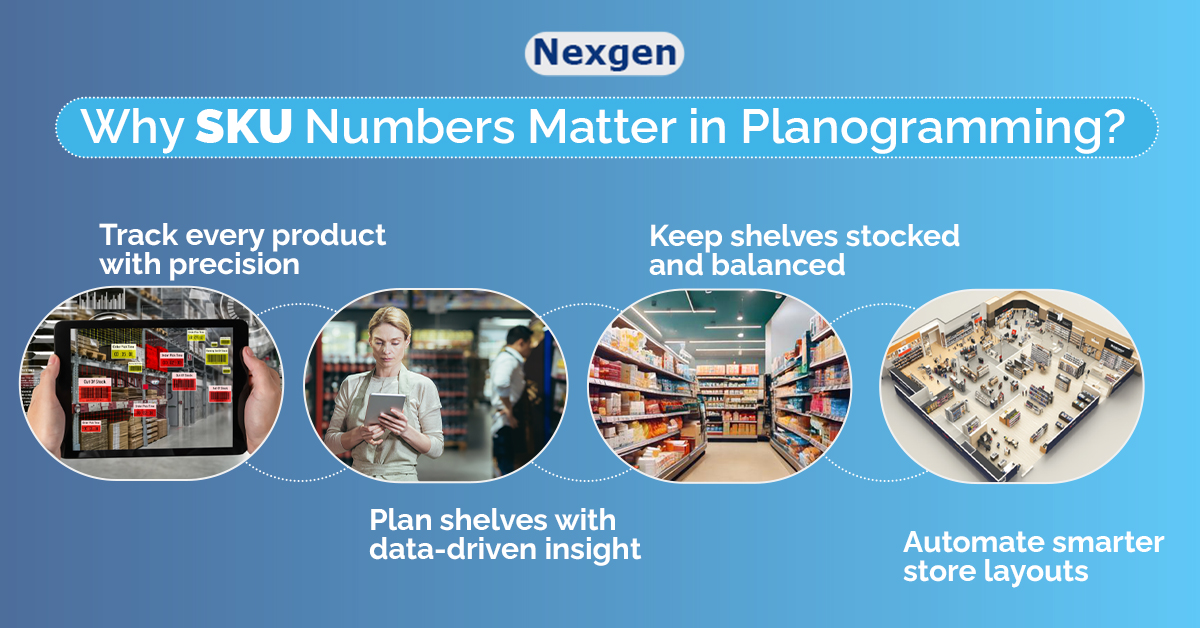In the fast-paced world of retail, efficiency and precision are key to success. One of the most powerful tools that help retailers manage inventory and optimize store layouts is the Stock Keeping Unit, commonly referred to as SKU. But what exactly is a SKU number, and how can it be used effectively in planogramming? This blog will provide an in-depth look at SKUs and their role in enhancing retail operations through planograms in 2025.
What Is an SKU Number?
An SKU number is a unique alphanumeric code assigned to a product to help businesses track inventory, manage stock levels, and streamline sales processes. Unlike barcodes, which are universal across retailers, SKUs are customized by individual businesses to suit their specific needs. Key characteristics of SKUs include:
- Uniqueness: Each SKU represents a specific product, including variations in size, color, or style.
- Customizability: Retailers create SKUs based on their product catalog and organizational structure.
- Information Encoding: SKUs often include details about the product category, brand, size, and other attributes.
Benefits of Using SKU Numbers
- Inventory management: SKUs allow retailers to track stock levels in real time.
- Sales analysis: Retailers can identify best-selling products and slow movers.
- Operational efficiency: Simplifies reordering and inventory checks.
How do SKUs and Planograms Work Together?
Planograms rely on data to determine the ideal product placement, considering factors such as shopper behavior, sales trends, and stock levels. SKUs play a vital role in the creation and execution of effective planograms. Here is how:
1. Precise product identification:
SKUs ensure that every product is accurately identified during the planogramming process. This precision is critical when managing extensive product assortments, as it prevents errors and ensures the right products are placed in the right spots.
2. Data-driven shelf planning:
Data-driven shelf planning: By analyzing sales data linked to SKUs, retailers can determine the best placement for each product. High-performing SKUs might be placed at eye level, while slower movers could occupy less prominent positions.

3. Inventory optimization:
SKUs help retailers monitor stock levels and prevent out-of-stock or overstock situations. When integrated with planogram software, SKU data ensures that shelves are consistently replenished with the right products.
4. Category management:
SKUs enable retailers to group products effectively within a planogram. For example, SKUs for beverages can be categorized into subgroups like sodas, juices, and energy drinks, ensuring logical and shopper-friendly shelf arrangements.
5. Planogram automation:
Modern planogram software can autofill shelves based on SKU data, saving time, and reducing manual errors. Retailers simply input SKU details, and the software generates a planogram that aligns with sales goals and space constraints.
Overview of Nexgen POG
Nexgen POG is a robust and user-friendly cloud-based AI -powered planogram software. It is designed for quick and efficient planogramming with minimal effort. Planograms in retail can be designed by easily dragging and dropping the products. The multi-device compatibility feature of POG allows you to obtain, share and edit planograms on any device, including your phone. It helps with designing store-specific planograms for increased product visibility and sales.
Get Your Free Trial Now!